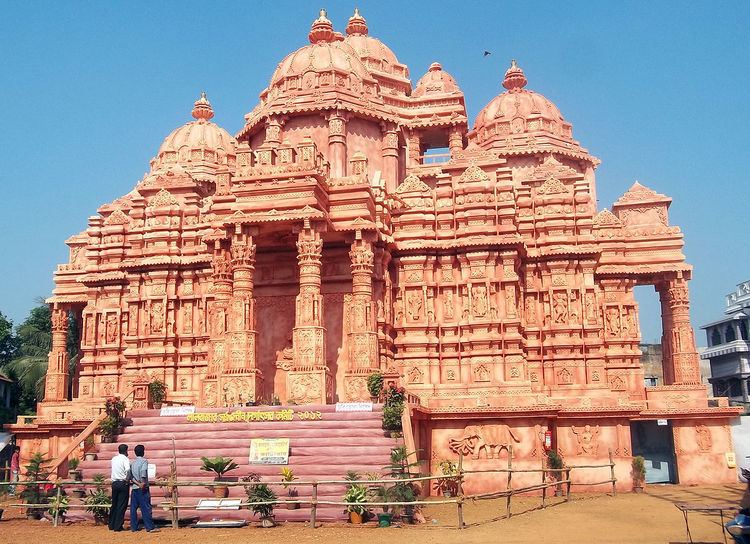 | ||
A pandal (မဏ္ဍပ် or mandat in Burmese, from Pali mandapa) is a fabricated structure, either temporary or permanent, that is used in a religious event that gathers people together, such as a wedding or festival.
Contents
In Hinduism
In Hinduism, a pandal is a temporary structure set up to venerate the god Ganesha during Ganesh Chaturthi or the goddess Durga during Durga Puja, known as puja pandal.
In Buddhism in Sri Lanka
In a ritual unique to Sri Lanka, Vesak thorang pandals are set up during the Vesak festival, with illuminated panels illustrated with episodes from the life of the Gautama Buddha and Jathaka Katha or stories based on Buddhist culture.
The fundamental concept of a Vesak Pandal is a creatively made, massive structure, decorated with a large number of lights and paintings mounted on a huge supporting structure. This supporting structure is traditionally built with Puwak Gasa (Arriconut trees). Creating the structure requires creativity, inventiveness and the high-level expertise of a number of artists and mlight-system electricians, not to mention funding and planning in advance. The goal is to create a very beautiful and colorful experience. Many different and dedicated groups of experts participating often pass down this work from generation to generation or master to student.
The most significant part of this display uses simple techniques in an intelligent way to create lighting on the front of the pandal. Most of the time this is a 2D structure.
Other types of pandals
Pandals are also set up during Gammaduwa (village rebirth) festivals, honouring the goddess Pattini.
Pandal also refers to platforms from which people splash water during the new year celebrations of the Thingyan festival.
A pandal can also be a ceremonial gate, built to welcome visitors.
A city in the Nilgiris district of the state of Tamil Nadu is named Pandalur.
